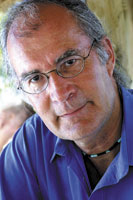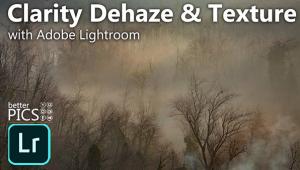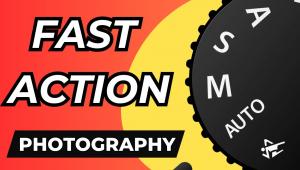’Tis The Season Of The Switch (With Apologies To Donovan)
The somewhat archaic reference in the title of this month's Editor's
Notes shows you from whence I came, and perhaps where most photographers are
heading. The onrush to digital is apparent in sales stats from the holiday shopping
season, where 90 percent of the cameras sold were digital. The show season,
which began in January and stretches into the fall, is filled with digital this
and that announcements, with any mention of film being done in the past tense.
It is apparent that the photo industry, has gone finally, and perhaps irrevocably,
down the digital road. The question is, where does that leave photographers?
 Some might scoff at this as being a tale thrice told--that the "debate"
is overdone. As far as the photo industry is concerned, and by that I mean those
with large R&D budgets, the multinationals that in many cases steer the
course for all, film is past tense. But the demands digital puts on photographers,
at least in terms of expense and the ever-changing learning curve, are great,
and have created a natural reassessment of the fast track all have been forced
to race upon. Digital sensor and especially digital SLR technology changes about
every six months; you can set your watch on an 18-month cycle of software upgrades.
And when one factor leaps ahead it forces change in all the other pieces of
the puzzle. You can't, for example, use certain software without upgrading
your hardware; drivers for "old" printers are left behind so you
won't be able to use that now-ancient printer with that new computer.
Some might scoff at this as being a tale thrice told--that the "debate"
is overdone. As far as the photo industry is concerned, and by that I mean those
with large R&D budgets, the multinationals that in many cases steer the
course for all, film is past tense. But the demands digital puts on photographers,
at least in terms of expense and the ever-changing learning curve, are great,
and have created a natural reassessment of the fast track all have been forced
to race upon. Digital sensor and especially digital SLR technology changes about
every six months; you can set your watch on an 18-month cycle of software upgrades.
And when one factor leaps ahead it forces change in all the other pieces of
the puzzle. You can't, for example, use certain software without upgrading
your hardware; drivers for "old" printers are left behind so you
won't be able to use that now-ancient printer with that new computer.
Judging from some of the letters we receive we are sometimes perceived as part of the problem, that our coverage of the latest gear and techniques makes us somehow complicit in the digital "conspiracy." Others laud us for breaking new ground and dealing with the digital doings in a way that no other publication matches. Like you, we walk the line, trying to see the true benefits of digital despite its marketing hype, recognizing that it has indeed opened new creative doors.
With all that in mind our goal now is to begin to develop a "grammar," if you will, of image quality, of what constitutes the best route for each end use of the image. In some cases it will be what's "good enough" for the task at hand; in others, it's establishing criteria with which some intelligent comparative analysis can be made. That includes continued exploration of the digital "raw" format, and how it can be exploited for the best possible digital image quality. It also includes more concentration on the creative process, and how the tools we test and review serve a distinct end.
There is also the matter of the physical presence, if you will, of the image, the visceral engagement with a photograph. Is digital a mere emulator of film, a cloned sheep that has wool and goes baa, but somehow leaves one's experience of "a sheep" unsettled? Or does it have its own mark and its own character, one that reshapes our perception of what constitutes a photographic image? That understanding and perception will only change over time, when the revolution becomes evolution, and when we've had time to digest all the changes that have occurred.
Like a study of history, one can only truly make judgments in hindsight, hopefully when all the spin has wound down. And digital is so new that current judgments can only be made in the context of what immediately preceded it, being film. So the "debate" between digital and film may become moot; that's when we can begin to explore digital on its own terms, and when we can deal with it in a frame of reference that allows us to say with certainty that it is Photography. Digital almost demands that we change the way we think about photography; what evolves from here is part of the adventure of the craft.

 Some might scoff at this as being a tale thrice told--that the "debate"
is overdone. As far as the photo industry is concerned, and by that I mean those
with large R&D budgets, the multinationals that in many cases steer the
course for all, film is past tense. But the demands digital puts on photographers,
at least in terms of expense and the ever-changing learning curve, are great,
and have created a natural reassessment of the fast track all have been forced
to race upon. Digital sensor and especially digital SLR technology changes about
every six months; you can set your watch on an 18-month cycle of software upgrades.
And when one factor leaps ahead it forces change in all the other pieces of
the puzzle. You can't, for example, use certain software without upgrading
your hardware; drivers for "old" printers are left behind so you
won't be able to use that now-ancient printer with that new computer.
Some might scoff at this as being a tale thrice told--that the "debate"
is overdone. As far as the photo industry is concerned, and by that I mean those
with large R&D budgets, the multinationals that in many cases steer the
course for all, film is past tense. But the demands digital puts on photographers,
at least in terms of expense and the ever-changing learning curve, are great,
and have created a natural reassessment of the fast track all have been forced
to race upon. Digital sensor and especially digital SLR technology changes about
every six months; you can set your watch on an 18-month cycle of software upgrades.
And when one factor leaps ahead it forces change in all the other pieces of
the puzzle. You can't, for example, use certain software without upgrading
your hardware; drivers for "old" printers are left behind so you
won't be able to use that now-ancient printer with that new computer.Judging from some of the letters we receive we are sometimes perceived as part of the problem, that our coverage of the latest gear and techniques makes us somehow complicit in the digital "conspiracy." Others laud us for breaking new ground and dealing with the digital doings in a way that no other publication matches. Like you, we walk the line, trying to see the true benefits of digital despite its marketing hype, recognizing that it has indeed opened new creative doors.
With all that in mind our goal now is to begin to develop a "grammar," if you will, of image quality, of what constitutes the best route for each end use of the image. In some cases it will be what's "good enough" for the task at hand; in others, it's establishing criteria with which some intelligent comparative analysis can be made. That includes continued exploration of the digital "raw" format, and how it can be exploited for the best possible digital image quality. It also includes more concentration on the creative process, and how the tools we test and review serve a distinct end.
There is also the matter of the physical presence, if you will, of the image, the visceral engagement with a photograph. Is digital a mere emulator of film, a cloned sheep that has wool and goes baa, but somehow leaves one's experience of "a sheep" unsettled? Or does it have its own mark and its own character, one that reshapes our perception of what constitutes a photographic image? That understanding and perception will only change over time, when the revolution becomes evolution, and when we've had time to digest all the changes that have occurred.
Like a study of history, one can only truly make judgments in hindsight, hopefully when all the spin has wound down. And digital is so new that current judgments can only be made in the context of what immediately preceded it, being film. So the "debate" between digital and film may become moot; that's when we can begin to explore digital on its own terms, and when we can deal with it in a frame of reference that allows us to say with certainty that it is Photography. Digital almost demands that we change the way we think about photography; what evolves from here is part of the adventure of the craft.

































